Exhibition dates: 5th March – 4th October 2021
Warning: Aboriginal and Torres Strait Islander readers should be aware that this posting contains images and names of people who may have since passed away.
Mervyn Bishop (Australian, b. 1945)
Girl pours tea, Burnt Bridge
1988
Gelatin silver photograph
30.1 x 40.4cm
Art Gallery of New South Wales
Hallmark Cards Australian Photography Collection Fund 1991
© Mervyn Bishop
Photo: AGNSW
In our sight, in our mind
Can you imagine, please, being the first person to step foot on the moon. Or the first person to discover radium. Now imagine being the first Indigenous Australian photojournalist, for the very first time taking photographs of your culture from the inside, photographs that picture the ongoing suffering of Indigenous people but also, as importantly, their strength and joy. Such was the calling of that legend of Australian photography, Mervyn Bishop.
Bishop was the first in a long line of Indigenous photographers who unearth, investigate, picture and honour their community, although interestingly none of the later photographers are photojournalists. Artists such as Tracey Moffatt, Michael Riley, Ricky Maynard, Lisa Bellear, R e a (rea saunders), Michael Cook, Brook Andrew, Bindi Cole and Christian Thompson) follow in his footsteps. Indeed in this posting, there is a photograph by Bishop presumably of the father of the photographer Ricky Maynard, Eric Maynard cleaning a mutton bird, Great Dog Island, Tasmania (1975, below), followed by a photograph by Maynard himself of muttonbirding on Dog Island from his series Portrait of a Distant Land. The songlines of place and ancestors are strong in Aboriginal culture, and “show the connectedness between places and the Creation events and ceremonies associated with those places. People born in that country are forever tied to the creation history of their birthplace and have custodial obligations to that place.”
The stories Bishop shares through his images are different from the colonial ones of yesteryear because they come from within the spirit and soul of the communities he is photographing. Less than 20 years before Bishop’s first photographs things were very different. The Australian journalist and writer Stan Grant observes that, “…there are images in our history, of Aboriginal people in chains. Aboriginal people tied together, with armed police standing either side of them.” In an article on The Guardian website we learn that “Neck chains were still being used on Aboriginal people in Western Australia in 1958. Witnesses at Halls Creek in the Kimberley reported seeing Aboriginal prisoners chained to a veranda post of the police station for weeks at a time… At peak periods, from the 1880s to the 1940s, hundreds of Aboriginal people were chained for alleged cattle theft, and marched out of their country, some for up to 400km. Each neck piece weighed 2.4kg.”1 Even in Dawn – A Magazine for the Aboriginal People of N.S.W. created by the New South Wales Aboriginal Welfare Board and aimed at Aboriginal Australians (running monthly from January 1952 until December 1968) – in which there was an article in February 1965 on a young Mervyn Bishop training to become a photographer (see below) – the forces of colonial assimilation were hard at work, as can be seen on the back cover of the Dawn October 1965 issue, where Leslie Ryan makes his debut at a “Deb” Ball for kindergarten children, where he “seems to be getting a better deal out of life now that he has love and attention.” Now that he has love and attention. Just let that sink in. Today, the dripping irony and sadness of this photograph in relation to what is now known as “The Stolen Generation”2 is apparent, the two young children taken from their families, taken from their culture, dressed to the nines in formal Western attire at such a young age. Remember, this is less than 60 years ago.
As much as Eugène Atget (French, 1857-1927) was a working photographer making “Documents pour artistes,” declaring his modest ambition to create images for other artists to use as source material, so Bishop was a working photographer who created “Documents for people” at the Department of Aboriginal Affairs in Canberra from 1974 onwards, where he covered the major developments in Aboriginal communities throughout Australia. As Mervyn himself says, “Photography has been my life, my passion for 60 years: the art and technique, the stories I’ve witnessed and captured. I’m glad to be able to share my life’s work with the public.” There it is in a nutshell… an intimate understanding of the the art and technique of photography (the construction the image plane, lighting, point of view, scale, printing, etc… ) and the stories he wanted to tell. And he tells those stories straight down the line, with no bullshit. When asked in an audio recording in this posting about why his award winning photograph Life and death dash (1971, below) was misunderstood, he says “it has nothing to do with blackfellas, put it that way… people say it’s a nun running away with a little black kid, the Stolen Generation – nothing to do with it! Not a bloody thing! … people interpret their own way. Who would know that I was black? People still go on about it but people are talking through their … whatever… so, you don’t know what your talking about.” There you have it.
Like his personality, Bishop’s wonderful photographs are strong and direct, informed and understanding of the work of Walker Evans or Dorothea Lange. In Girl pours tea, Burnt Bridge (1988, above), an Aboriginal mother sits at a kitchen table in a corrugated iron shack and pours tea from a large battered teapot into enamel mugs, one for herself and one presumably for the photographer. Light pours through a hole in the roof. The table is covered in a floral probably plastic table cloth. There are plastic flowers set upon it. The chairs are vinyl. Behind her is an old kitchen unit from the 1950s with a wire screen at eye level, used to keep flies out. To the right are boxes and detritus while to the left a plastic bucket sits on the battered sink. Her child plays next to her oblivious of the camera flash while she stares directly at the camera. Much as Lange’s Migrant Mother, this women possesses her own inner dignity which Bishop captures so well: an unexpected intimacy with the subject in which we confront uncomfortable truths.
Other photographs, such as Children playing in river, Mumeka (1975, below) capture the pure joy of Aboriginal life, or the resoluteness of a people having to survive the trauma of cultures and societies and their complex histories (Couple on veranda, Coffs Harbour 1988, below). But let us be clear… this is not a vanishing race, nor an assimilated race but a proud, creative and intelligent race now picturing its own history and future. As Ricky Maynard states, “The contest remains over who will image and own this history. We must define history, define whose history it is, and define its purpose, as well as the tools used for the telling of this.” Bishop was at the very beginning of this imaging and ownership of Aboriginal history, not by colonial photographers of the past, but from within the community itself, in the present. His photographs are about speaking up about injustice and making sure that Indigenous perspectives were heard and not railroaded by non-indigenous people – Bishop was at the beginning of this – and about how the image speaks truth to power (a non-violent political tactic, employed by dissidents against the received wisdom or propaganda of governments they regard as oppressive, authoritarian or an ideocracy),
Towards the end of the documentary “The Bowraville Murders”, Stan Grant observes that Aboriginal people are kicked every day… [and this remains] out of sight, out of mind. He reminds us that between 1991 and 2021 there have been more than 470 Aboriginal deaths in custody… and not a single conviction. Out of sight, out of mind. Indeed, “fluidity of memory and a capacity to forget is perhaps the most haunting trait of our species. As history confirms, it allows us to come to terms with any degree of social, moral, or environmental degradation.”3 And this is what we all do. That is, until a photographer and artist like Mervyn Bishop comes along and reminds us through his photographs of the integrity, vitality and presence of Aboriginal people, spirit that stretches back thousands of years – despite our capacity to forget the trauma that Indigenous Australians have endured. This is the purpose of Bishop’s photographs … they bring to the forefront of our knowledge and imagination an understanding of the history and future of Aboriginal people. They remain, in our sight, in our mind.
Dr Marcus Bunyan
Footnotes
1/ Chris Owen. “How Western Australia’s ‘unofficial’ use of neck chains on Indigenous people lasted 80 years,” on The Guardian website Sun 7 March 2201 [Online] Cited 03/10/2021.
2/ The Stolen Generations refers to a period in Australia’s history where Aboriginal children were removed from their families through government policies. This happened from the mid-1800s to the 1970s.In the 1860s, Victoria became the first state to pass laws authorising Aboriginal children to be removed from their parents. Similar policies were later adopted by other states and territories – and by the federal government when it was established in the 1900s. For about a century, thousands of Aboriginal children were systematically taken from their families, communities and culture, many never to be returned. These children are known as the Stolen Generations survivors, or Stolen Children.These children were taken by the police; from their homes; on their way to or from school. They were placed in over 480 institutions, adopted or fostered by non-Indigenous people and often subjected to abuse. The children were denied all access to their culture, they were not allowed to speak their language and they were punished if they did. The impacts of this are still being felt today.There are currently more than 17,000 Stolen Generations survivors in Australia. Over one third of all Aboriginal and Torres Strait Islander people are their descendants. In Western Australia almost half of the population have Stolen Generation links.
Anonymous. “Who are the Stolen Generations?” on the Healing Foundation website [Online] Cited 03/10/2021.
3/ Wade Davis. “The Unraveling of America,” on the Rolling Stone website August 6, 2020 [Online] Cited 03/10/2021.
Many thankx to the National Film and Sound Archive of Australia for allowing me to publish the photographs in the posting. Please click on the photographs for a larger version of the image.
“The contest remains over who will image and own this history. We must define history, define whose history it is, and define its purpose, as well as the tools used for the telling of this.”
Ricky Maynard, 2007
“Australia in many ways is a crime scene. And the first crime is Captain Cook ordering his men to shoot at Aboriginal people. That’s the shot that we still hear all around Australia. And of course, there are images in our history, of Aboriginal people in chains. Aboriginal people tied together, with armed police standing either side of them. This is what has happened in our country, so it isn’t a great step to go from frontier attitudes of violence to deaths of three children in Bowraville. Because for us, it’s the same thing. It’s a killing that never stops.”
Stan Grant quoted in the documentary “The Bowraville Murders” directed by Allan Clarke on SBS on Demand, Australia, 2021
The National Film and Sound Archive of Australia will celebrates Mervyn Bishop, one of Australia’s most prolific and influential photographers, with a new exhibition 5 March – 4 October 2021.
Mr Bishop’s images of culture, politics and people have significantly influenced our collective understanding of Australia’s history. This exhibition is drawn from the Art Gallery of New South Wales collection, the artist’s private archive, and enriched by sound and moving image from the NFSA.
Mervyn Bishop features iconic photographs that derive from his career as a photojournalist, alongside personal images of family and friends and intimate portraits of members of the Aboriginal community. Spanning the past 60 years, the exhibition provides a fascinating insight into Bishop’s life and work.
In 1963 Mervyn Bishop left his hometown of Brewarrina, venturing to Sydney, where he successfully applied for a cadetship at The Sydney Morning Herald. He became Australia’s first Aboriginal press photographer and in 1971 won the News Photographer of the Year Award with his front-page photograph Life and Death Dash, 1971.
Bishop went on to work at the Department of Aboriginal Affairs in Canberra in 1974 where he covered the major developments in Aboriginal communities throughout Australia. This included his iconic image from 1975 when the (then) Prime Minister, Gough Whitlam, poured a handful of earth back into the hand of Vincent Lingiari, Gurindji elder and traditional landowner.
Unknown photographer
Untitled [Australian Aborigines in chains]
Nd
Indigenous Australians in neck chains. Historical records say they had been chained after killing an animal. Neck chains were used by police across Western Australia from the 1880s to the late 1950s. Photograph: State Library of Western Australia
Mervyn Bishop (Australian, b. 1945)
Prime Minister Gough Whitlam pours soil into the hands of traditional land owner Vincent Lingiari, Northern Territory
1975, printed 1999
Type R3 photograph
30.5 x 30.5cm
Art Gallery of New South Wales
Hallmark Cards Australian Photography Collection Fund 1991
© Mervyn Bishop/ Department of the Prime Minister and Cabinet
Photo: AGNSW
Gurindji strike (or Wave Hill Walk-Off) led by Vincent Lingiari
On 23 August 1966 200 Gurindji stockmen, domestic workers and their families walked off Wave Hill station in the Northern Territory and refused to keep working for the station owners. The disagreement over wages and land ownership lasted for seven years. In 1974 some of the Gurindji people’s homelands were returned to them. This influenced the first legislation, passed in 1976, that allowed Aboriginal people to claim land title. In September 2020 the Gurindji claim for native title to Wave Hill station was granted, 54 years after the walk-off that helped to spark Australia’s Indigenous land rights movement.
Why did the Gurindji people strike?
In the 1960s Wave Hill station was owned by an international company called Vestey Brothers. Vestey Brothers paid the Gurindji people working on the station very low wages. On 23 August 1966 the Gurindji people stopped working and walked off Wave Hill station in protest. They were led by elder Vincent Lingiari.
In 1967 the Gurindji set up a camp at Daguragu (also known as Wattie Creek). It soon became clear that the Gurindji did not simply want fair wages. More importantly they wanted the government to return some of their land. For seven years the Gurindji stayed at Daguragu and sent letters and petitions to the Northern Territory Government and the Australian Government asking that their land be returned to them.
How was the dispute resolved?
In 1972 the Labor Party led by Gough Whitlam came to power. The Whitlam government was interested in establishing Aboriginal land rights. Around the same time, Vestey Brothers finally agreed to hand over a small section of Wave Hill station around Daguragu to the Gurindji people.
In 1975 Prime Minister Whitlam visited Daguragu and in a ceremony he returned the land to the Gurindji people. Whitlam famously poured a handful of soil through Vincent Lingiari’s hand and said, ‘Vincent Lingiari, I solemnly hand to you these deeds as proof, in Australian law, that these lands belong to the Gurindji people’. …
The Gurindji strike helped to make the Australian public aware of Aboriginal land ownership claims. It also influenced the first legislation in Australia that allowed Aboriginal people to apply for ownership of their traditional lands, the Aboriginal Land Rights (Northern Territory) Act 1976.
Text from the National Museum of Australia website [Online] Cited 14/09/2021
“I bin thinkin’ this bin Gurindji country. We bin here longa time before them Vestey mob.”
Vincent Lingiari, 1966
“We originally took the picture under the shade of a bough shed and it didn’t have a nice look about it.”
Mervyn Bishop
What’s the backstory to your famous land rights photograph?
Conversation between Guardian Australia picture editor Jonny Weeks and the photographer Mervyn Bishop in the article by Jonny Weeks and Miles Martignoni. “Great Australian photographs: Mervyn Bishop’s symbolic shot – an audio essay,” on the Guardian Australia website Mon 5 Jun 2017 [Online] Cited 14/9/2021.
An historic handful of dirt: Whitlam and the legacy of the Wave Hill Walk-Off
On the prime ministerial jet that morning, public servant turned Aboriginal affairs adviser H.C. ‘Nugget’ Coombs urged Whitlam to keep his speech short and invest the day with a sense of ceremony.
Coombs recounted a story told by anthropologist Bill Stanner: how Wurundjeri elders had formalised their people’s 1835 land treaty with encroaching settlers at Port Phillip by placing soil into the hand of explorer John Batman. Hearing Coombs’ suggestion that the PM might reverse the gesture with Lingiari, Whitlam revised his performance plan for Daguragu on the spot.
When it came to his turn to speak, Whitlam congratulated the Gurindji and their supporters on their victory after a nine-year “fight for justice”. Promising that the Australian government would “help you in your plans to use this land fruitfully”, his speech concluded with the words:
Vincent Lingiari, I solemnly hand to you these deeds as proof, in Australian law, that these lands belong to the Gurindji people, and I put into your hands this piece of the earth itself as a sign that we restore them to you and your children forever.
In finishing, Whitlam handed Lingiari the new deeds to the Gurindji’s land, now officially dubbed NT Pastoral Lease 805. Then, to the joy of assembled photographers, he stooped down, grabbed a handful of red earth, and poured it into Lingiari’s open palm. …
Lingiari – who according to one reporter was struck with a case of nerves – responded to Whitlam and the crowd in his own language:
The important white men are giving us this land ceremonially… It belonged to the whites, but today it is in the hands of us Aboriginals all around here. Let us live happily as mates, let us not make it hard for each other… They will give us cattle, they will give us horses, and we will be happy… These important white men have come here to our ceremonial ground and they are welcome…
You (Gurindji) must keep this land safe for yourselves, it does not belong to any different Welfare man. They took our country away from us, now they have bought it back ceremonially.
After Whitlam gave the old man even more dirt for the benefit of the press, photographer Mervyn Bishop’s images of the “handover” became some of the most recognised in Australian political history. The power of the photos rested in the symbolism of Whitlam’s gesture, made on behalf of millions concerned by Aboriginal dispossession.
The handover implicitly acknowledged the moral rightfuness of the Gurindji’s stand, and the historical injustices done to them by the Europeans on their country. It was by dint of the Gurindji’s hard slog at Wattie Creek that they had successfully brought all this to the nation’s attention. The handover day was the old Gurindji men’s finest hour, and their victory.
Charlie Ward. “An historic handful of dirt: Whitlam and the legacy of the Wave Hill Walk-Off,” on The Conversation website August 21, 2016 [Online] Cited 14/09/2021
Mervyn Bishop: pioneer, artist, and source of inspiration
Hear from National Film and Sound Archive of Australia curator Tara Marynowsky as she describes the ‘insider’s knowledge’ visitors to the Mervyn Bishop exhibition will receive, and how his story brings together those of the famous faces he captured.
In this excerpt from ABC series art+soul curator Hetti Perkins talks with artist photographer Mervyn Bishop
Mervyn Bishop exhibition at the National Film and Sound Archive of Australia (NFSA), Canberra
Courtesy NFSA
Mervyn Bishop exhibition at the National Film and Sound Archive of Australia (NFSA), Canberra
Photo by Madeleine Stevens, Courtesy NFSA
Mervyn Bishop exhibition entrance
Courtesy NFSA
Mervyn Bishop at NFSA
Photo by Madeleine Stevens, Courtesy NFSA
Mervyn Bishop exhibition at the NFSA, featuring images and footage of boxer Lionel Rose. See Bishop’s photograph Lionel Rose at his press conference (1968, below)
Photographs by Grace Costa
Mervyn Bishop (Australian, b. 1945)
Lionel Rose at his press conference
1968
Gelatin silver photograph
30.1 x 30.1cm
Art Gallery of New South Wales
Hallmark Cards Australian Photography Collection Fund 1991
© Mervyn Bishop
Photo: AGNSW
Mervyn Bishop exhibition at the NFSA showing some of his cameras
Courtesy NFSA
Mervyn Bishop with camera
Courtesy NFSA
Teenage Mervyn had already in a sense begun his career in the mid 1950s. He started to take documentary family snaps on his mother’s Kodak 620, followed by a more expensive fifteen pound Japanese 35mm of his own in 1957. He was encouraged by with the help of a Church of England Bush Brother [priest] Brother Richard and Vic King a local photographer who had a dark room that Merv frequented. He then began to hold backyard slide nights of his family and neighbourhood snaps.
By the beginning of the 1960s the search for the exotic authentic had shifted from the south-east to northern Australia. Although Australian painters such as Russell Drysdale and Arthur Boyd had created images from their trips to western NSW post WWII, photographer Axel Poignant and US Life magazine photographer Fritz Gorro both visited Arnhem Land in the 1950s to document and ‘compose’ their subject matter. …
‘Merv Bishop Graduates from Photographers’ Course’, Dawn magazine’s headline said. After leaving Dubbo High in 1962 he spent a year as a clerk with the ABC before starting as a cadet photographer at the Sydney Morning Herald in 1963, (the first Aboriginal photographer ever hired by the paper) and entered the first photographic course at the Sydney Technical College, Broadway Sydney, graduating in 1966, Next year was the important year of the referendum concerning Aboriginal people and ‘the state’…
Djon Mundine. “Brewarrina Boy,” on the Australian Museum website 12/07/2021 [Online] Cited 14/09/2021
Mervyn Bishop media call 4 March 2021 – Curator Coby Edgar and Mervyn Bishop
Courtesy NFSA
Mervyn Bishop in a recreation of his darkroom at the exhibition media call
Courtesy NFSA
Mervyn Bishop at NFSA
Photo by Madeleine Stevens, Courtesy NFSA
Mervyn Bishop exhibition at the NFSA showing at left, Pool game, Burnt Bridge (1988, below); at second left, Save the children pre-school, Nambucca Heads (1974, below); at centre Woman standing near electric power cord in water, Burnt Bridge (1988, below); and at right, Couple on veranda, Coffs Harbour (1988, below)
Courtesy NFSA
Mervyn Bishop (Australian, b. 1945)
Pool game, Burnt Bridge
1988
Gelatin silver photograph
40 x 30cm
Art Gallery of New South Wales
Purchased under the terms of the Florence Turner Blake Bequest 2008
© Mervyn Bishop
Photo: AGNSW
Mervyn Bishop (Australian, b. 1945)
Save the children pre-school, Nambucca Heads
1974
Gelatin silver photograph
40 x 30cm
Art Gallery of New South Wales
Purchased under the terms of the Florence Turner Blake Bequest 2008
© Mervyn Bishop
Photo: AGNSW
“I don’t think there were even Indigenous journos in those days. As my friend said: ‘You were the lone ranger'”
Mervyn Bishop
How diverse was your photographic subject matter?
Conversation between Guardian Australia picture editor Jonny Weeks and the photographer Mervyn Bishop in the article by Jonny Weeks and Miles Martignoni. “Great Australian photographs: Mervyn Bishop’s symbolic shot – an audio essay,” on the Guardian Australia website Mon 5 Jun 2017 [Online] Cited 14/9/2021.
Mervyn Bishop (Australian, b. 1945)
Woman standing near electric power cord in water, Burnt Bridge
1988, printed 2008
Gelatin silver print
40.0 x 30.0cm
Art Gallery of New South Wales
Purchased under the terms of the Florence Turner Blake Bequest 2008
© Mervyn Bishop
Photo: AGNSW
Mervyn Bishop (Australian, b. 1945)
Couple on veranda, Coffs Harbour
1988
Gelatin silver photograph
40 x 30cm
Art Gallery of New South Wales
Purchased under the terms of the Florence Turner Blake Bequest 2008
© Mervyn Bishop
Photo: AGNSW
Mervyn Bishop exhibition at the NFSA showing at middle, Elders, Amata (1977, below); and at right, ‘Bob’s catch’ Shoalhaven Heads (1974, below)
Courtesy NFSA
Mervyn Bishop (Australian, b. 1945)
Elders, Amata
1977, printed 1991
Gelatin silver print
29.9 x 40.5cm
Art Gallery of New South Wales
Hallmark Cards Australian Photography Collection Fund 1991
© Mervyn Bishop
Photo: AGNSW
Mervyn Bishop (Australian, b. 1945)
‘Bob’s catch’ Shoalhaven Heads
1974, printed 1991
Gelatin silver print
30.2 x 30.1cm
Art Gallery of New South Wales
Hallmark Cards Australian Photography Collection Fund 1991
© Mervyn Bishop
Photo: AGNSW
Mervyn Bishop exhibition at the NFSA showing his photograph, Life and death dash (1971, below)
Courtesy NFSA
“People say it’s about the stolen generations, but it’s got nothing to do with that – not a bloody thing.”
Mervyn Bishop
Why is ‘Life-and-death dash’ misunderstood?
Conversation between Guardian Australia picture editor Jonny Weeks and the photographer Mervyn Bishop in the article by Jonny Weeks and Miles Martignoni. “Great Australian photographs: Mervyn Bishop’s symbolic shot – an audio essay,” on the Guardian Australia website Mon 5 Jun 2017 [Online] Cited 14/9/2021.
Mervyn Bishop (Australian, b. 1945)
Life and death dash
1971
Gelatin silver photograph
40.4 x 30.1cm
Art Gallery of New South Wales
Hallmark Cards Australian Photography Collection Fund 1991
© Mervyn Bishop
Photo: AGNSW
Mervyn Bishop (Australian, b. 1945)
Far West Children’s health clinic, Manly
1968
Gelatin silver photograph
40 x 30cm
Art Gallery of New South Wales
Purchased under the terms of the Florence Turner Blake Bequest 2008
© Mervyn Bishop
Photo: AGNSW
Mervyn Bishop (Australian, b. 1945)
Alan Judd, ABC trainee radio announcer, Sydney
1968
Gelatin silver photograph
40 x 30cm
Art Gallery of New South Wales
Purchased under the terms of the Florence Turner Blake Bequest 2008
© Mervyn Bishop
Photo: AGNSW
Mervyn Bishop (Australian, b. 1945)
Lois O’Donoghue CBA, AM, and Oodgeroo Noonuccal
1974
Gelatin silver photograph
30 x 30.4cm
Art Gallery of New South Wales
Purchased under the terms of the Florence Turner Blake Bequest 2008
© Mervyn Bishop
Photo: AGNSW
Lowitja Lois O’Donoghue Smart, AC, CBE, DSG (born Lois O’Donoghue; 1 August 1932) is an Aboriginal Australian retired public administrator. In 1990-1996 she was the inaugural chairperson of the Aboriginal and Torres Strait Islander Commission (ATSIC) (dismantled in 2004). She is patron of the Lowitja Institute, a research institute for Aboriginal & Torres Strait Islander health and wellbeing.
Oodgeroo Noonuccal (/ˈʊdɡəruː ˈnuːnəkəl/ UUD-gə-roo NOO-nə-kəl; born Kathleen Jean Mary Ruska, later Kath Walker (3 November 1920 – 16 September 1993) was an Aboriginal Australian political activist, artist and educator, who campaigned for Aboriginal rights. Noonuccal was best known for her poetry, and was the first Aboriginal Australian to publish a book of verse.
Mervyn Bishop (Australian, b. 1945)
Photography cadets with model, Sydney Morning Herald
1967
Gelatin silver photograph
29.8 x 40.4cm
Art Gallery of New South Wales
Hallmark Cards Australian Photography Collection Fund 1991
© Mervyn Bishop
Photo: AGNSW
Mervyn Bishop (Australian, b. 1945)
Cousins, Ralph and Jim, Brewarrina
1966
Gelatin silver photograph
30 x 40cm
Art Gallery of New South Wales
Purchased under the terms of the Florence Turner Blake Bequest 2008
© Mervyn Bishop
Photo: AGNSW
Mervyn Bishop (Australian, b. 1945)
Roslyn Watson
1973
Gelatin silver photograph
40 x 30cm
Art Gallery of New South Wales
Purchased under the terms of the Florence Turner Blake Bequest 2008
© Mervyn Bishop
Photo: AGNSW
Mervyn Bishop (Australian, b. 1945)
Children playing in river, Mumeka
1975
Gelatin silver photograph
30.1 x 29.9cm
Art Gallery of New South Wales
Hallmark Cards Australian Photography Collection Fund 1991
© Mervyn Bishop
Photo: AGNSW
Mervyn Bishop (Australian, b. 1945)
Children playing in river, Mumeka (detail)
1975
Gelatin silver photograph
30.1 x 29.9cm
Art Gallery of New South Wales
Hallmark Cards Australian Photography Collection Fund 1991
© Mervyn Bishop
Photo: AGNSW
Mervyn Bishop (Australian, b. 1945)
Untitled. 2 Boys posing, Tony Mundine’s gym, Redfern
Nd
35mm black and white slide
2.5 x 3.5cm
Mervyn Bishop Archive, Art Gallery of New South Wales Archive
© Mervyn Bishop
Photo: AGNSW
Mervyn Bishop (Australian, b. 1945)
H Thomas, C Dixon, K Smith ACT
1976
35mm colour slide
2.5 x 3.5cm
Mervyn Bishop Archive, Art Gallery of New South Wales Archive
© Mervyn Bishop
Photo: AGNSW
Mervyn Bishop (Australian, b. 1945)
Murray Island
1977
35mm colour slide
3.5 x 2.5cm
Mervyn Bishop archive, Art Gallery of New South Wales Archive
© Mervyn Bishop
Photo: AGNSW
Exhibition dedicated to photographer Mervyn Bishop opens in Canberra
National Film and Sound Archive of Australia (NFSA) to showcase work of award-winning artist from 5 March – 1 August 2021.
The National Film and Sound Archive of Australia (NFSA) is celebrating Mervyn Bishop, one of Australia’s most prolific and influential photographers, with a new exhibition opening in Canberra tomorrow Friday 5 March. Mr Bishop himself will present a floor talk on opening day, at 12pm.
Mr Bishop’s images of culture, politics and people have significantly influenced our collective understanding of Australia’s history. This exhibition is drawn from the Art Gallery of New South Wales (AGNSW) collection, the artist’s private archive, and enriched by sound and moving image from the NFSA.
Mervyn Bishop features iconic photographs that derive from his career as a photojournalist, alongside personal images of family and friends and intimate portraits of members of the Aboriginal community. Spanning the past 60 years, the exhibition provides a fascinating insight into Bishop’s life and work.
NFSA Acting CEO Nancy Eyers said: ‘We are pleased to bring the work of Mervyn Bishop to Canberra and share his story with our audiences. Mr Bishop’s photographs present us with a wonderful combination of history, artistic excellence, and self-representation. In addition to the striking prints from the AGNSW, the NFSA’s audiovisual collection will bring a new dimension to the exhibition.’
‘This comprehensive exhibition was developed by the Art Gallery of New South Wales (AGNSW), but there are new additions from the NFSA collection for Canberra audiences. It’s been fantastic working with them; there are not many exhibitions that combine photography with mixed media, and I think visitors will be amazed by this combination.’
AGNSW Curator Coby Edgar added: ‘Working with Mervyn Bishop and the NFSA to build this show has been a truly collaborative process with the aim to present Australia through Mervyn’s eyes. He has captured many of our country’s most pivotal moments politically and socially, and this exhibition is a celebration of his life and practice and the Australian peoples and cultures that he has documented.’
In 1963 Mervyn Bishop left his hometown of Brewarrina, venturing to Sydney, where he successfully applied for a cadetship at The Sydney Morning Herald. He became Australia’s first Aboriginal press photographer and in 1971 won the News Photographer of the Year Award with his front-page photograph Life and Death Dash 1971. Bishop went on to work at the Department of Aboriginal Affairs in Canberra in 1974 where he covered the major developments in Aboriginal communities throughout Australia. This included his iconic image from 1975 when the (then) Prime Minister, Gough Whitlam, poured a handful of earth back into the hand of Vincent Lingiari, Gurindji elder and traditional landowner. Bishop’s childhood, his life experiences and career will be explored by former Reuters journalist Tim Dobbyn in an upcoming biography tentatively titled A Handful of Sand.
Mervyn Bishop said: ‘Photography has been my life, my passion for 60 years: the art and technique, the stories I’ve witnessed and captured. I’m glad to be able to share my life’s work with the public.’
An AGNSW touring exhibition, presented in collaboration with NFSA.
About Mervyn Bishop
Born and raised in Brewarrina, New South Wales, Mervyn Bishop was encouraged by his mother to take his first photograph. After witnessing the ‘magic’ of the developing process, he became passionate about photography. In 1963 he successfully applied for a four-year cadetship at The Sydney Morning Herald and completed a Photography Certificate Course at Sydney Technical College during these years. Bishop continued to work for The Sydney Morning Herald and was Australia’s first Aboriginal press photographer. In 1971 he won the News Photographer of the Year Award with his front-page photograph, Life and Death Dash, 1971.
Bishop started work at the Department of Aboriginal Affairs in Canberra in 1974, in the early years of an important era in Indigenous self-determination. Here he covered the major developments in Aboriginal communities throughout Australia, including the historical moment in 1975 when the (then) Prime Minister, Gough Whitlam, poured a handful of earth back into the hand of Vincent Lingiari, Gurindji elder and traditional landowner. This image – representing the Australian government’s recognition of Aboriginal land rights – became an icon of the land rights movement and Australian photography. In 1989 Bishop received his Associate Diploma in Adult Education at Sydney College of Advanced Education and went on to teach photography at Tranby Aboriginal College in Glebe, Sydney and the Eora Centre TAFE (Technical and Further Education) in Redfern, Sydney.
Bishop’s diverse career, combining journalistic and art photography, was celebrated in 1991 in his solo exhibition and accompanying monograph, ‘In Dreams: Mervyn Bishop Thirty Years of Photography 1960-1990’. This important exhibition was curated by Tracey Moffatt and opened at the Australian Centre for Photography, Sydney, before touring nationally and internationally. The timely and intimate photographs celebrate Bishop’s contribution to Australian art and photojournalism. In 2000, Bishop was presented with the Red Ochre Award from the Aboriginal and Torres Strait Islander Board of the Australia Council, in recognition of his pioneering work and ongoing influence.
Biography by Jonathan Jones, first published in ‘Tradition today: Indigenous art in Australia’, Art Gallery of New South Wales, Sydney, 2014.
Mervyn Bishop’s journey to be one of Australia’s best-known photographers is paved with triumphs, setbacks and tragedy. Bishop left Canberra in 1979 to return to The Sydney Morning Herald in a career choice that ended with his departure in 1986. While looking for work he was befriended by people from the Sydney arts scene, leading to his first solo exhibition in 1991, the In Dreams show. But this victory is forever linked to the death of his wife Elizabeth on the same day as the exhibition’s opening. His later work is dominated by portraiture that demonstrates his ability to put people at ease and a sympathetic appreciation for the human condition.
Synopsis from the upcoming biography A Handful of Sand, by author Tim Dobbyn.
Press release from the NFSA
Mervyn Bishop (Australian, b. 1945)
Fisherman Charlie Ardler, Wreck Bay
1975, printed 2008
Gelatin silver print
30.0 x 30.4cm
Art Gallery of New South Wales
Purchased under the terms of the Florence Turner Blake Bequest 2008
© Mervyn Bishop
Photo: AGNSW
Mervyn Bishop (Australian, b. 1945)
Womenfolk, Bowraville
1974, printed 2008
Gelatin silver print
30.0 x 30.4cm
Art Gallery of New South Wales
Purchased under the terms of the Florence Turner Blake Bequest 2008
© Mervyn Bishop
Photo: AGNSW
What is your legacy? And whose work do you admire?
Conversation between Guardian Australia picture editor Jonny Weeks and the photographer Mervyn Bishop in the article by Jonny Weeks and Miles Martignoni. “Great Australian photographs: Mervyn Bishop’s symbolic shot – an audio essay,” on the Guardian Australia website Mon 5 Jun 2017 [Online] Cited 14/9/2021.
Additional images not in exhibition
Aboriginal Protection Board (1952-1969) (publisher)
Department of Child Welfare and Social Welfare (1970-1975)
Aborigine Trains as News Photographer
Dawn magazine, February 1965
Aboriginal Protection Board (1952-1969) (publisher)
Department of Child Welfare and Social Welfare (1970-1975)
Your Career – Photography
Dawn magazine, October 1965
Aboriginal Protection Board (1952-1969) (publisher)
Department of Child Welfare and Social Welfare (1970-1975)
Untitled [Deb Ball]
Dawn magazine, October 1965 back cover
Dawn – A Magazine for the Aboriginal People of N.S.W.
Dawn was an Australian magazine created by the New South Wales Aboriginal Welfare Board and aimed at Aboriginal Australians. It ran monthly from January 1952 until December 1968. Two issues were published in 1969 before the disbanding of the Aboriginal Welfare Board led to the publication ceasing. The magazine was relaunched in April 1970 under the title New Dawn, published by the New South Wales Department of Child Welfare and Social Welfare. It continued to be produced on a monthly basis; production slowed in 1974 and a final issue was published in July 1975.
Text from the Wikipedia website
Mervyn Bishop (Australian, b. 1945)
Aboriginal children, cousin Helen Bishop, Gibbs children, Brewarrina, New South Wales
1965, reproduction 2014
Gelatin silver print
27 x 40cm
National Library of Australia
© Mervyn Bishop
Mervyn Bishop (Australian, b. 1945)
Bishop Town picnic, Brewarrina
1966, printed 2008
Gelatin silver print
30.0 x 40.0cm
Art Gallery of New South Wales
Purchased under the terms of the Florence Turner Blake Bequest 2008
© Mervyn Bishop
Photo: AGNSW
Mervyn Bishop (Australian, b. 1945)
Lil and Larry Cargill at the rocks, Brewarrina, New South Wales
1967, reproduction 2014
Gelatin silver print
27 x 40cm
National Library of Australia
© Mervyn Bishop
Mervyn Bishop (Australian, b. 1945)
A woman drinks a pint of beer in a Glebe pub on the eve of its closing
1967
Gelatin silver print
30.2 x 30.3cm
National Library of Australia
© Mervyn Bishop
Mervyn Bishop (Australian, b. 1945)
Patrons drinking at a pub on the eve of its closure, Glebe, New South Wales
1967, reproduction 2014
Gelatin silver print
30.2 x 30.3cm
National Library of Australia
© Mervyn Bishop
‘YES’ for Aborigines pamphlet
1967
Donated by Janelle Marshall, the child pictured on the pamphlet
National Museum of Australia
It is 1967.
Aboriginal and Torres Strait Islander people are citizens, can vote and are as entitled to government pensions as all other Australians.
But they are not formally counted in census returns, and the Australian Government does not have the power to make laws for their benefit.
Aboriginal and Torres Strait Islander Australians are subject to individual state controls and laws, rather than uniform national ones, and in several cases the states are not legislating for the benefit of their Aboriginal and Torres Strait Islander inhabitants.
To change this situation there needs to be a change to the Constitution, by a referendum, a national vote.
Text from the National Museum of Australia website
Mervyn Bishop (Australian, b. 1945)
The Murai tree at the Rocks, Brewarrina, New South Wales
1969, reproduction 2014
Gelatin silver print
30.3 x 30.3cm
National Library of Australia
© Mervyn Bishop
Mervyn Bishop (Australian, b. 1945)
Guests at Lorraine Taylor’s wedding at Terrigal, New South Wales
1973, reproduction 2014
Gelatin silver print
27 x 40cm
National Library of Australia
© Mervyn Bishop
Mervyn Bishop (Australian, b. 1945)
Warning sign 30 kilometres from Maningrida, Arnhem Land, Northern Territory
1974, reproduction 2014
Gelatin silver print
27.3 x 40.2cm
National Library of Australia
© Mervyn Bishop
“Do not take picture with camer. If someone take it? The law said, please, when coming in here, take only the park painting, no money, but someone else body is ten dollars and countrie is eleven dollars. This is going all over the world to white men and blacks.”
Mervyn Bishop (Australian, b. 1945)
School bus, Yarrabah
1974, printed 2008
Gelatin silver print
30.0 x 40.0cm
Art Gallery of New South Wales
Purchased under the terms of the Florence Turner Blake Bequest 2008
© Mervyn Bishop
Photo: AGNSW
Mervyn Bishop (Australian, b. 1945)
The bus stop, Yalambie Reserve, Mt Isa
1974, printed 2008
Gelatin silver print
30.0 x 40.0cm
Art Gallery of New South Wales
Purchased under the terms of the Florence Turner Blake Bequest 2008
© Mervyn Bishop
Photo: AGNSW
Mervyn Bishop (Australian, b. 1945)
Sawmill workers, Cherbourg
1974, reproduction 2014
Gelatin silver print
27 x 40cm
National Library of Australia
© Mervyn Bishop
Mervyn Bishop (Australian, b. 1945)
Pay day, Hooker Creek, Northern Territory
1974, reproduction 2014
Gelatin silver print
27.3 x 40.2cm
National Library of Australia
© Mervyn Bishop
Mervyn Bishop (Australian, b. 1945)
Pay day, Hooker Creek, Northern Territory
1974, reproduction 2014
Gelatin silver print
27.3 x 40.2cm
National Library of Australia
© Mervyn Bishop
Mervyn Bishop (Australian, b. 1945)
Aboriginal man beside humpy, Yuendumu, Northern Territory
1974, reproduction 2014
Gelatin silver print
27 x 40cm
National Library of Australia
© Mervyn Bishop
Mervyn Bishop (Australian, b. 1945)
Woman attend home management course at Yuendumu
1974, printed 2008
Gelatin silver print
30.0 x 40.0cm
Art Gallery of New South Wales
Purchased under the terms of the Florence Turner Blake Bequest 2008
© Mervyn Bishop
Photo: AGNSW
Yuendumu is a town in the Northern Territory of Australia, 293 kilometres northwest of Alice Springs on the Tanami Road, within the Central Desert Region local government area. It ranks as one of the larger remote communities in central Australia, and has a thriving community of Aboriginal artists.
Mervyn Bishop (Australian, b. 1945)
Melba Saunders surrounded by stuffed koalas at an Aboriginal craft shop, Brisbane
1974, reproduction 2014
Gelatin silver print
40.2 x 27cm
National Library of Australia
© Mervyn Bishop
Mervyn Bishop (Australian, b. 1945)
John Nykamula treating patient Gurrumuru Mala, Arnhemland, Northern Territory
1975, reproduction 2014
Gelatin silver print
40.2 x 30cm
National Library of Australia
© Mervyn Bishop
Mervyn Bishop (Australian, b. 1945)
Bishop and Gurindji men outside the Murramulla Social Club
1975, reproduction 2014
Gelatin silver print
National Library of Australia
© Mervyn Bishop
Mervyn Bishop (Australian, b. 1945)
An Aboriginal school teacher and two children, Maningrida community, Arnhem Land, Northern Territory
1975, reproduction 2014
Gelatin silver print
30 x 29.8cm
National Library of Australia
© Mervyn Bishop
Mervyn Bishop (Australian, b. 1945)
Eric Maynard cleaning a mutton bird, Great Dog Island, Tasmania
1975, reproduction 2014
Gelatin silver print
30.2 x 30cm
National Library of Australia
© Mervyn Bishop
Ricky Maynard (Australian, b. 1953; Trawlwoolway)
Coming Home
2005
From the series Portrait of a Distant Land
Gelatin silver print
33.8 x 52.0cm
© Ricky Maynard
Shearwaters, a type of muttonbird, also called yolla or moonbird, are harvested for food (the meat tastes like mutton), feathers for mattress fill, and the omega-3 rich oil, which is squeezed out of the birds’ guts, for medicinal use. Harvesting is a confronting job to outsiders: chicks are pulled from their burrows and their necks are quickly snapped. …
Indigenous people have been catching muttonbirds for thousands of years. “Millennia,” Maynard emphasises. “It’s just evolved. Our old fellas used to go to the rookeries, and get these birds when they were there because they were a great food source; a seasonal tucker.”
Dog Island, where the muttonbirds are harvested in Maynard’s play, is named for Great Dog or Big Dog Island: a 354-hectare granite isle filled with tussock grassland, off the south coast of Flinders Island in Bass Strait, where commercial birding operations have existed for more than 200 years. Maynard’s father didn’t take him muttonbirding on Big Dog, his family’s “spiritual home”, until he was 15, because birding season, which runs late March through late April, clashed with the school term. Maynard, though, takes his eight-year-old son each year.
Maynard is a Trawlwoolway man and descendant of Mannalargenna, a leader of the north-east Tasmanian Indigenous peoples, who led resistance against British soldiers in the early 19th century.
In 1995 the Tasmanian government handed back several sites, including Great Dog and Babel islands, to Indigenous people in an acknowledgement of Aboriginal dispossession.
Steve Dow. “‘I wanted something to celebrate’: Indigenous playwright tackles tradition in ‘The Season’,” on The Guardian website Wed 14 Dec 2016 [Online] Cited 14/09/2021
Mervyn Bishop (Australian, b. 1945)
Three Aboriginal women holding cakes, Mungundi, New South Wales
1976, reproduction 2014
Gelatin silver print
30 x 30cm
National Library of Australia
© Mervyn Bishop
Mervyn Bishop (Australian, b. 1945)
Charles Perkins shaking hands with members of the National Aboriginal Congress, Canberra
1978, reproduction 2014
Gelatin silver print
30 x 30cm
National Library of Australia
© Mervyn Bishop
Charles Perkins (Australian, 1936-2000; Arrernte; Kalkadoon)
Charles Nelson Perkins AO, commonly known as Charlie Perkins (16 June 1936 – 19 October 2000), was an Australian Aboriginal activist, soccer player and administrator. He was the first Indigenous Australian man to graduate tertiary education, and is known for his instigation and organisation of the 1965 Freedom Ride and his key role in advocating for a “yes” vote in the Australian referendum, 1967 (Aboriginals). He had a long career as a public servant.
Mervyn Bishop (Australian, b. 1945)
Untitled (Bellbrook NSW, man leaning on fence)
4 May 1988
Art Gallery of New South Wales
© Mervyn Bishop
Photo: AGNSW
Mervyn Bishop (Australian, b. 1945)
Children floating on board, Yirrkala, Northern Territory
1989, reproduction 2014
Gelatin silver print
27 x 40cm
National Library of Australia
© Mervyn Bishop
Mervyn Bishop (Australian, b. 1945)
Aboriginal Australian Gerard Rice at the Rally, Sydney
1989, reproduction 2014
Gelatin silver print
40 x 27cm
National Library of Australia
© Mervyn Bishop
National Film and Sound Archive of Australia
McCoy Circuit, Acton ACT 2601
Opening hours:
Daily 10am – 4pm


![Unknown photographer. 'Untitled [Australian Aborigines in chains]' Nd Unknown photographer. 'Untitled [Australian Aborigines in chains]' Nd](https://artblart.com/wp-content/uploads/2017/11/australian-aborigines-c-web.jpg?w=840)




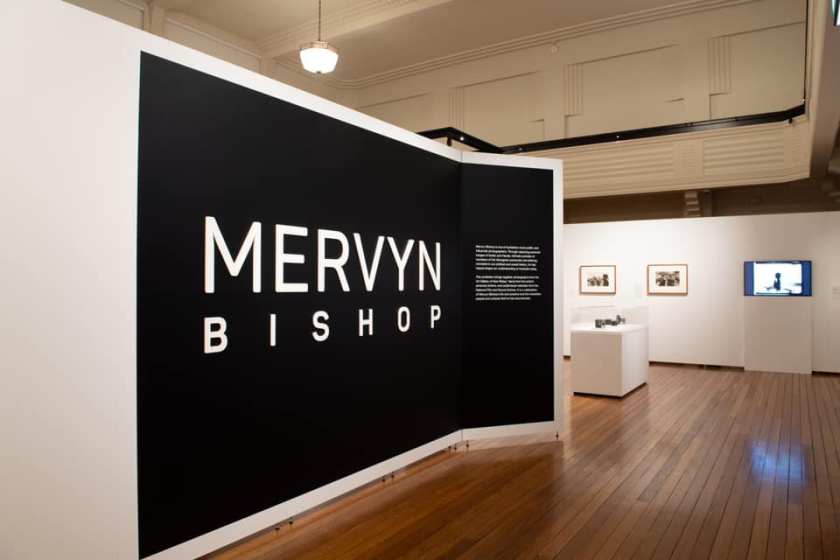







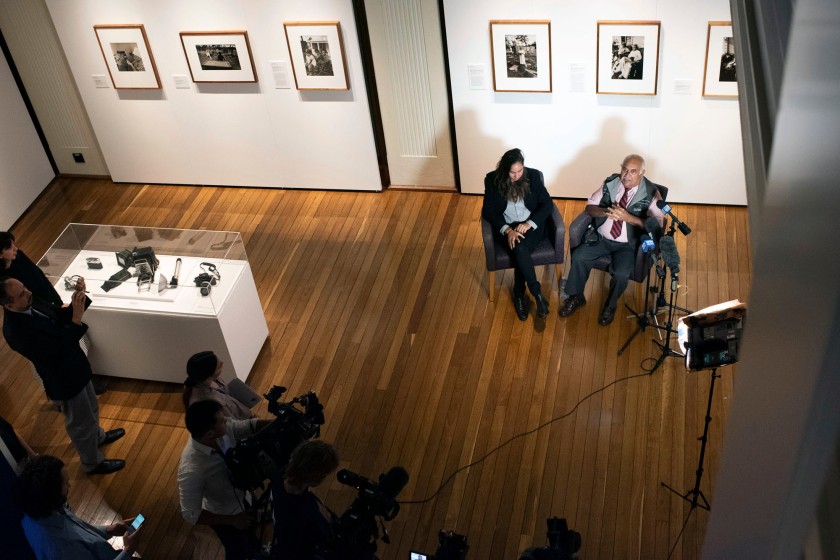







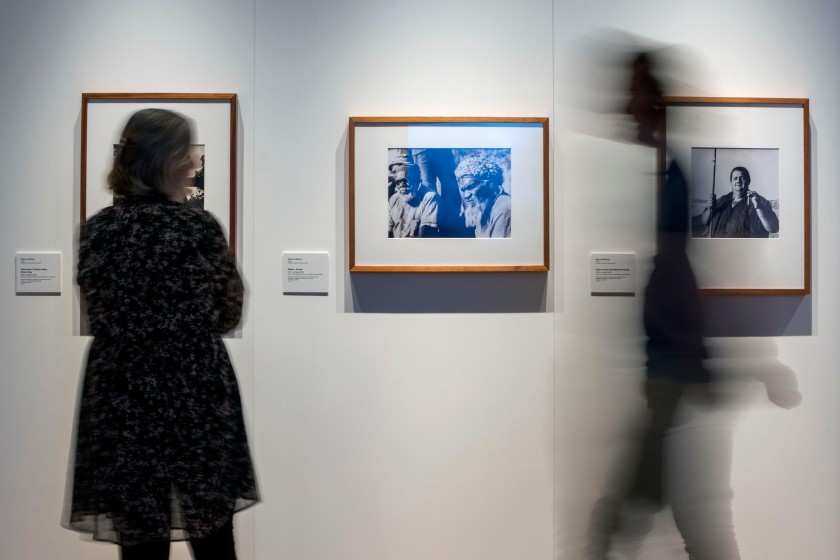








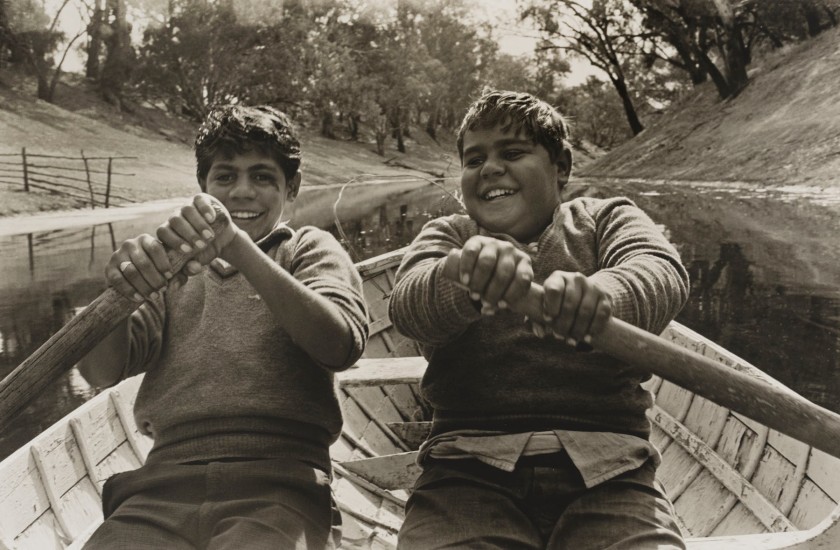











![Aboriginal Protection Board (1952-1969) (publisher) Department of Child Welfare and Social Welfare (1970-1975) "Untitled [Deb Ball]" Dawn magazine, October 1965 back cover Aboriginal Protection Board (1952-1969) (publisher) Department of Child Welfare and Social Welfare (1970-1975) "Untitled [Deb Ball]" Dawn magazine, October 1965 back cover](https://artblart.com/wp-content/uploads/2021/09/dawn-october-1965-back-cover.jpg?w=650&h=852)

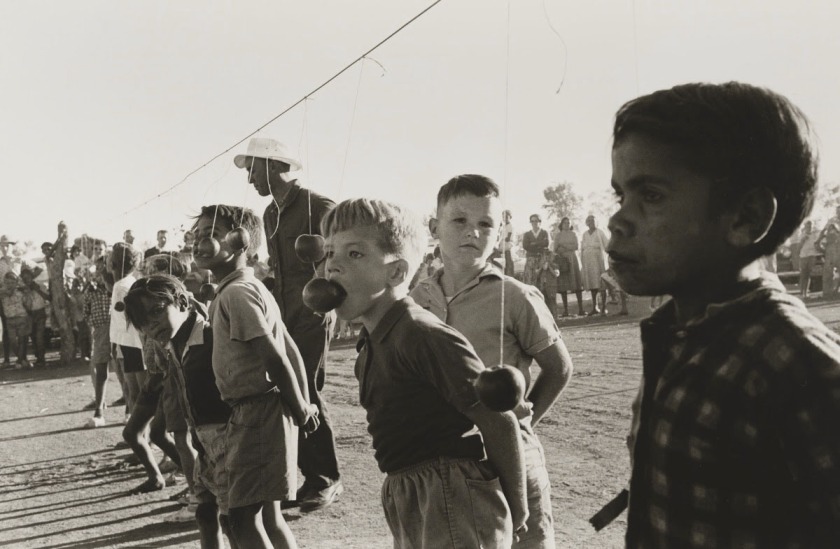













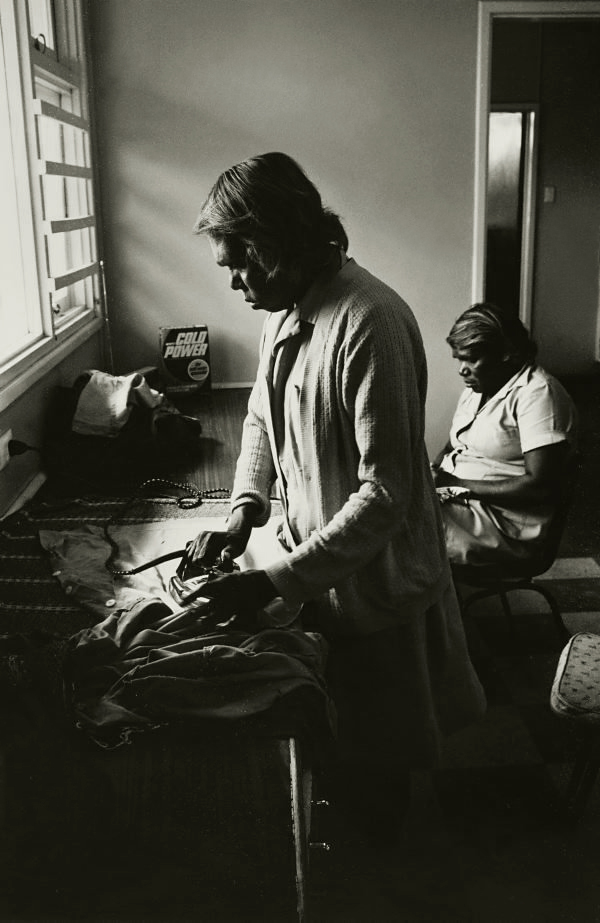















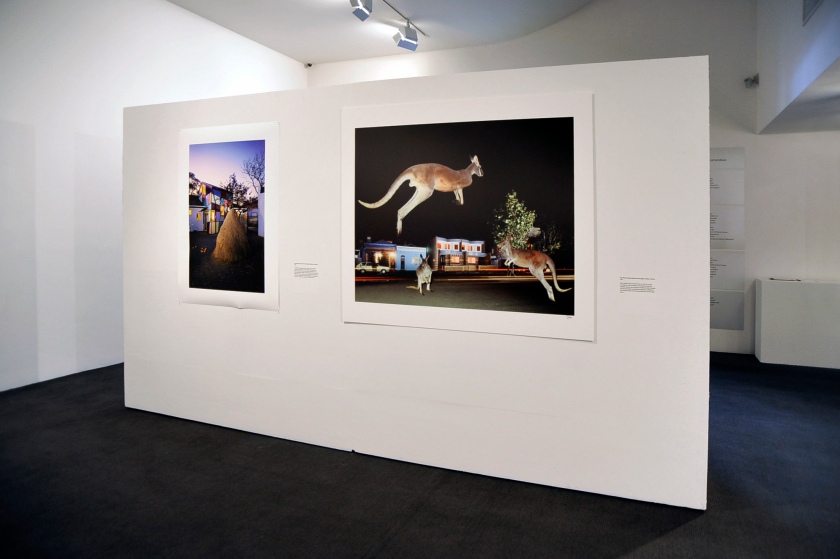





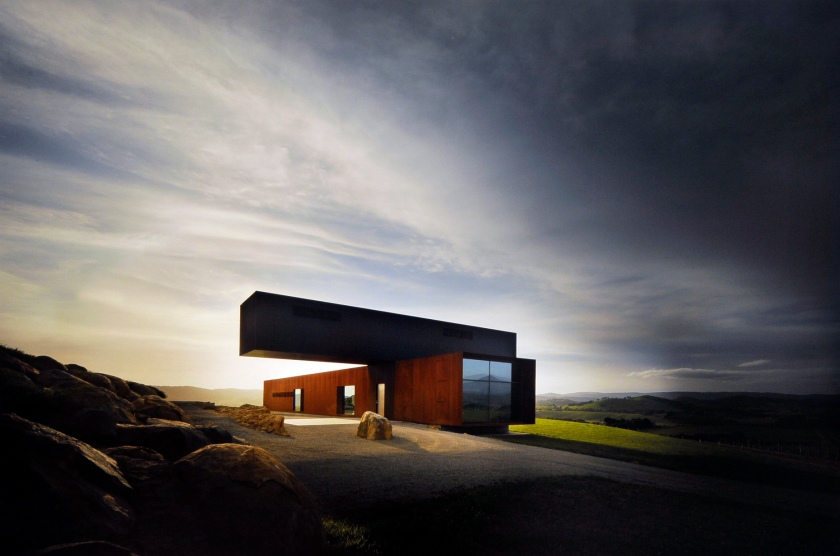




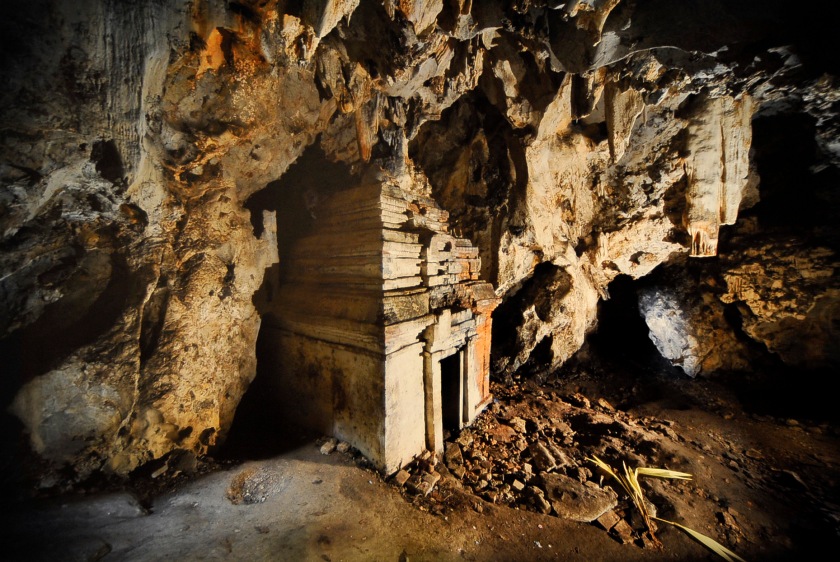
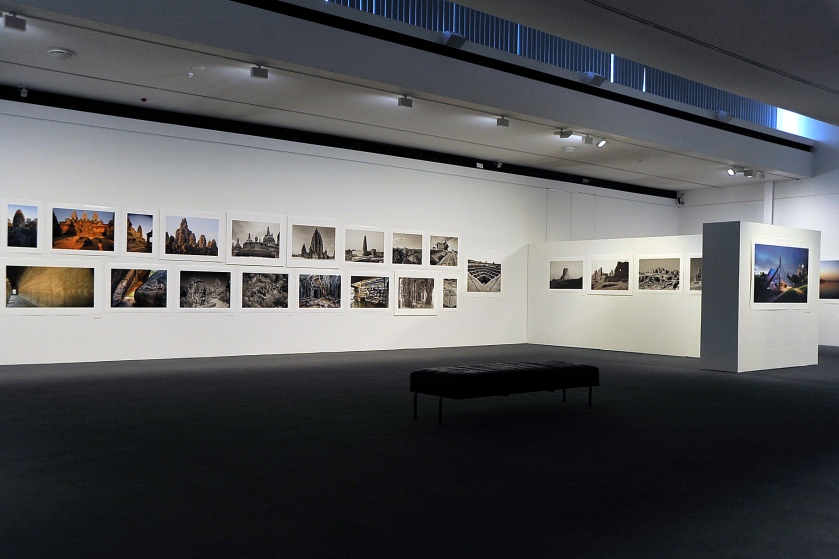


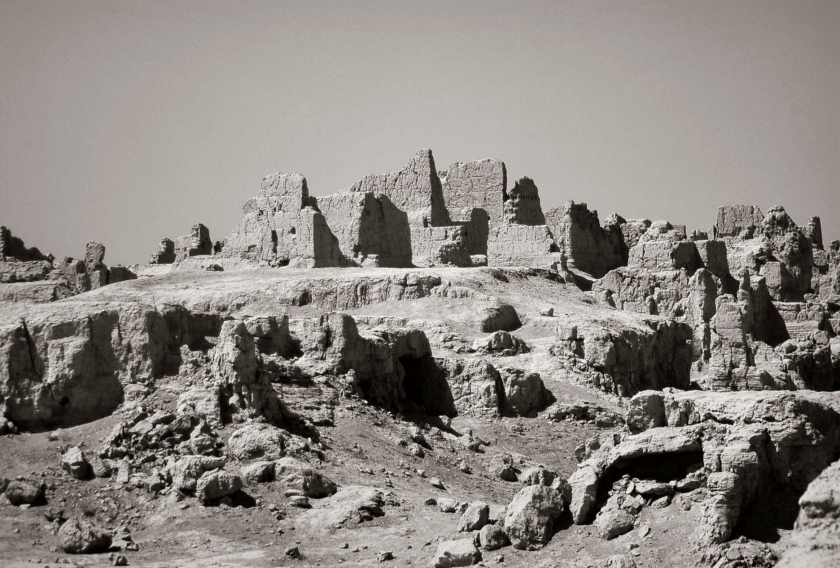





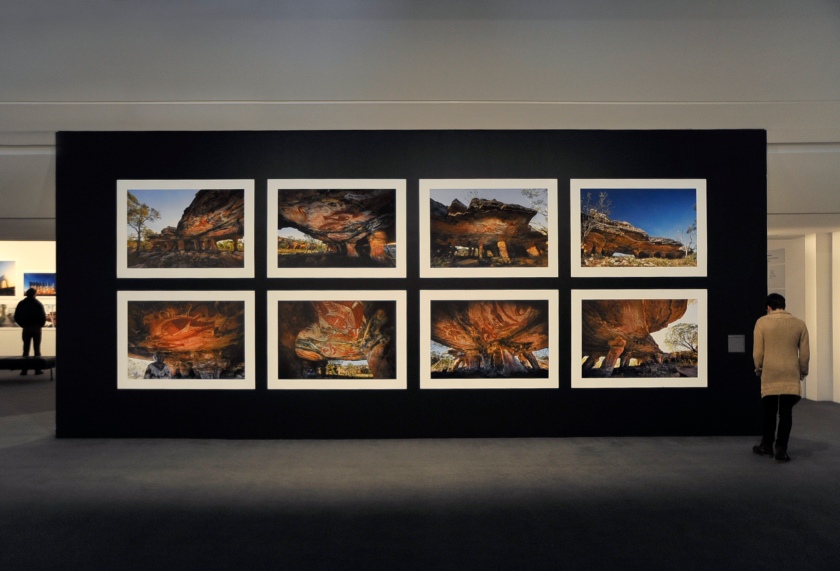
















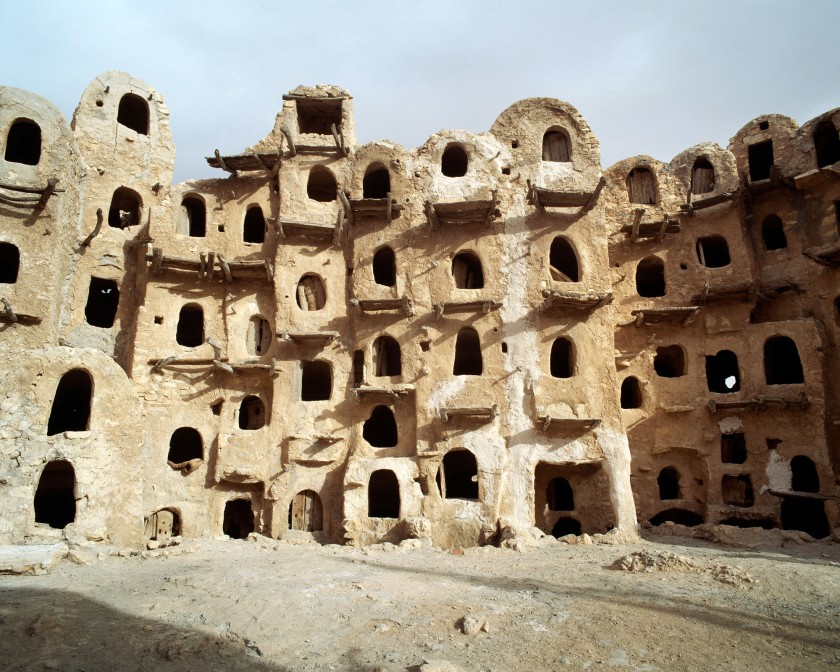






















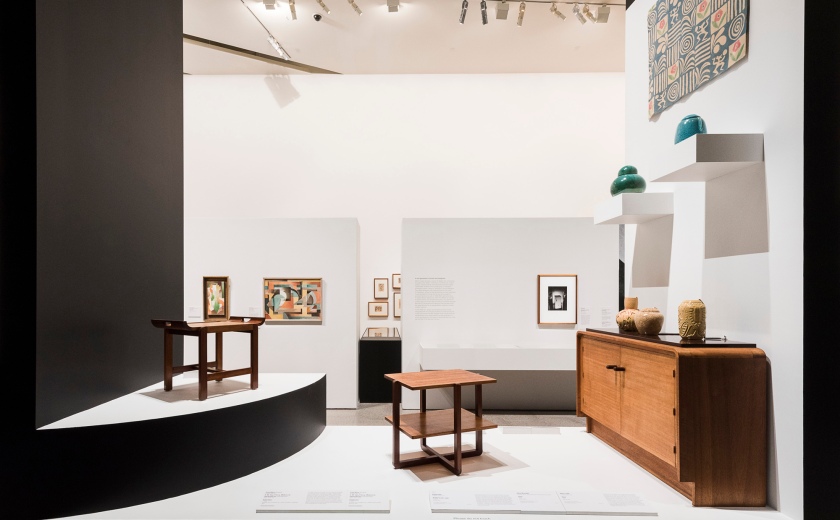













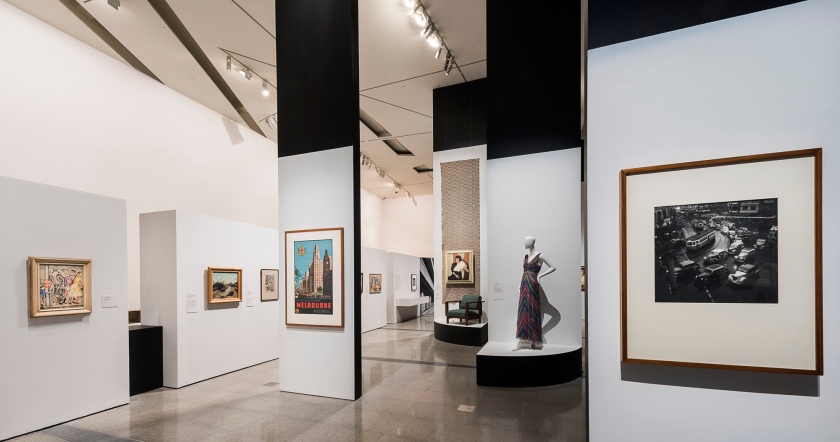






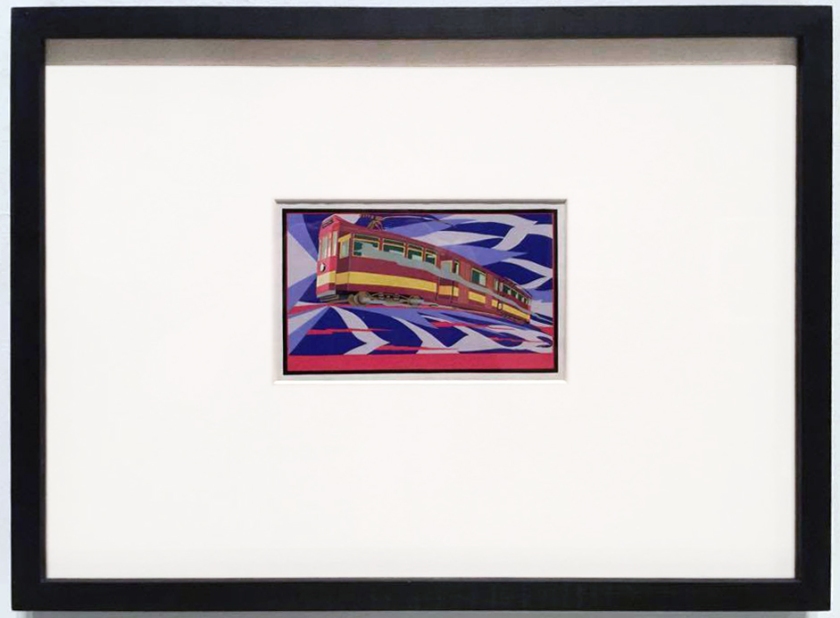


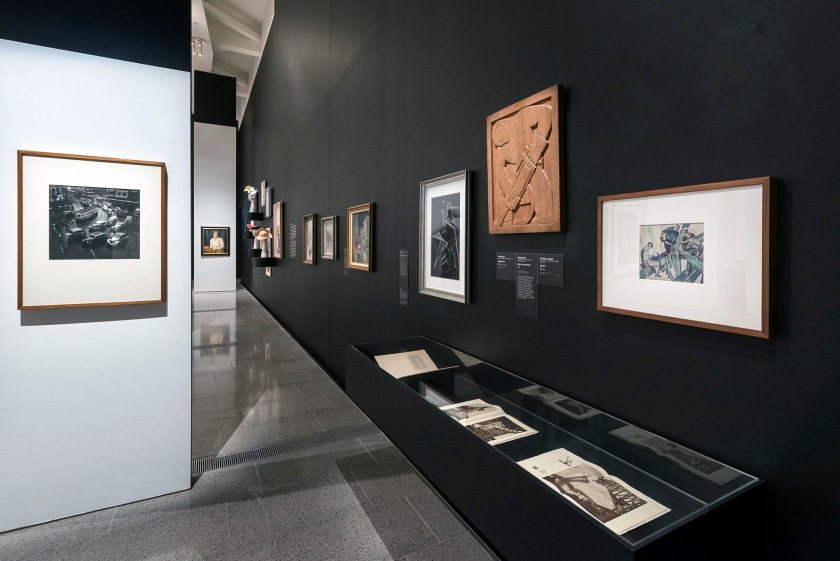
















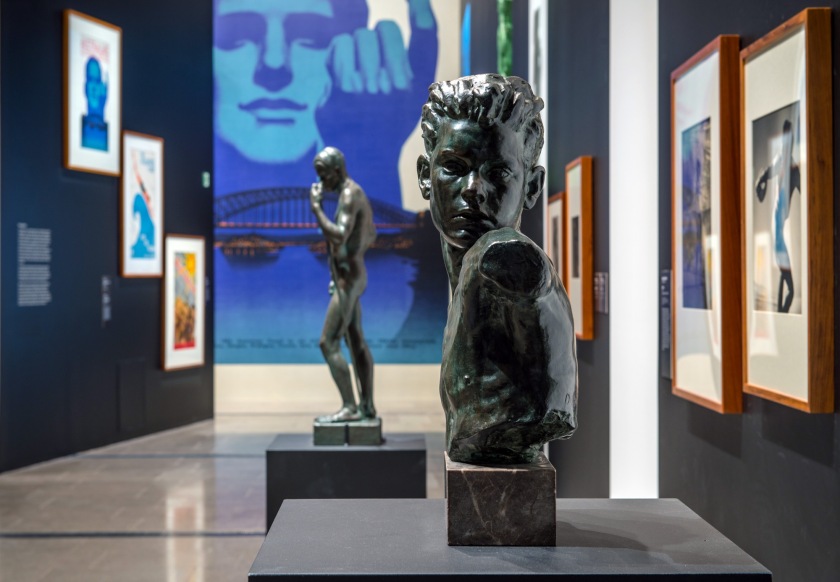














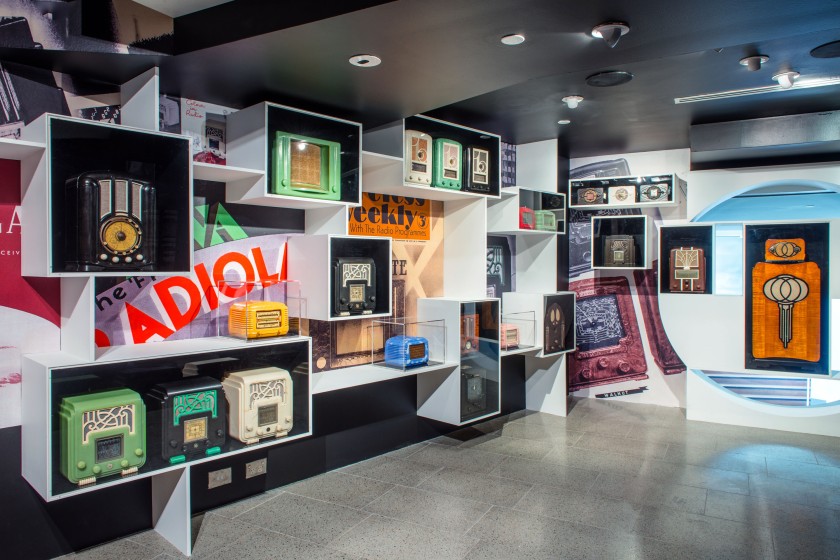
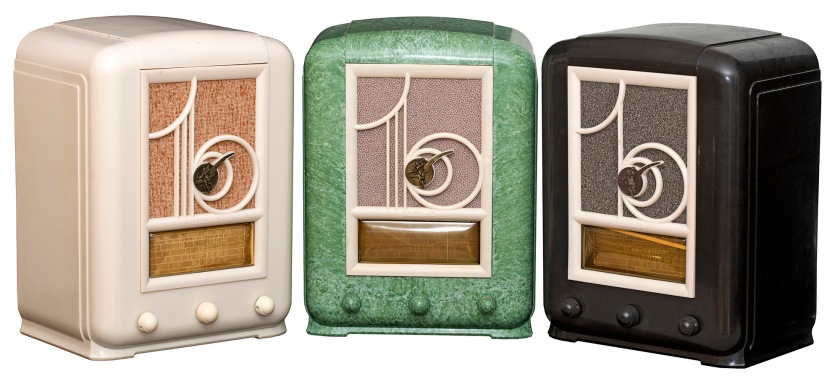



















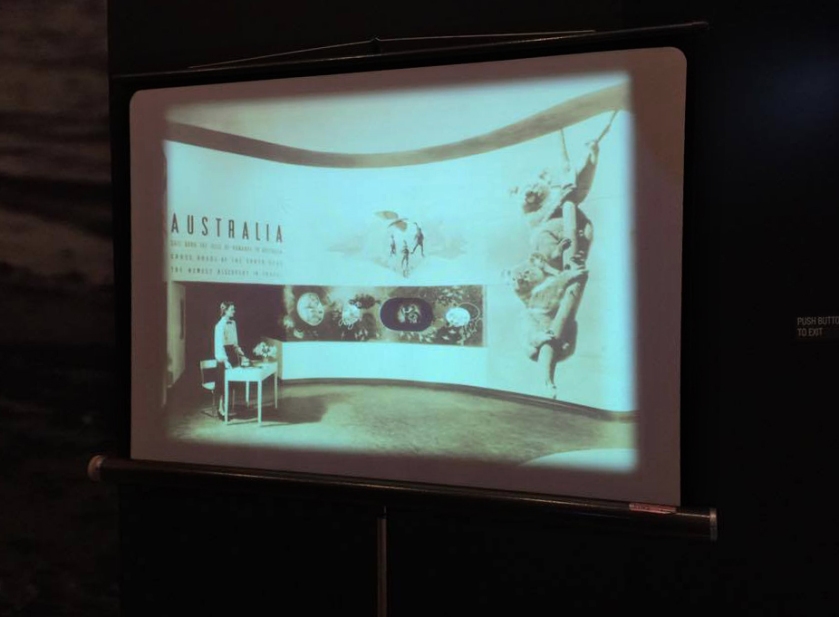



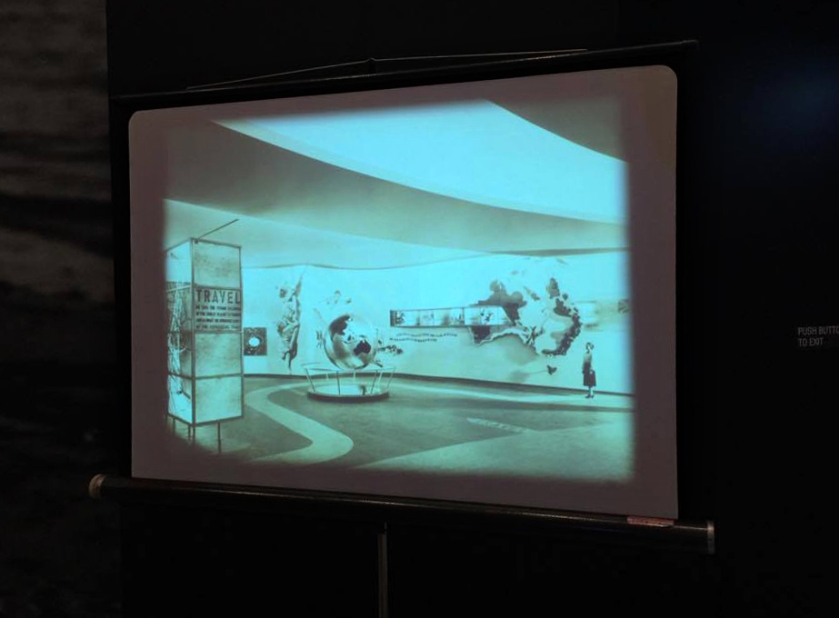


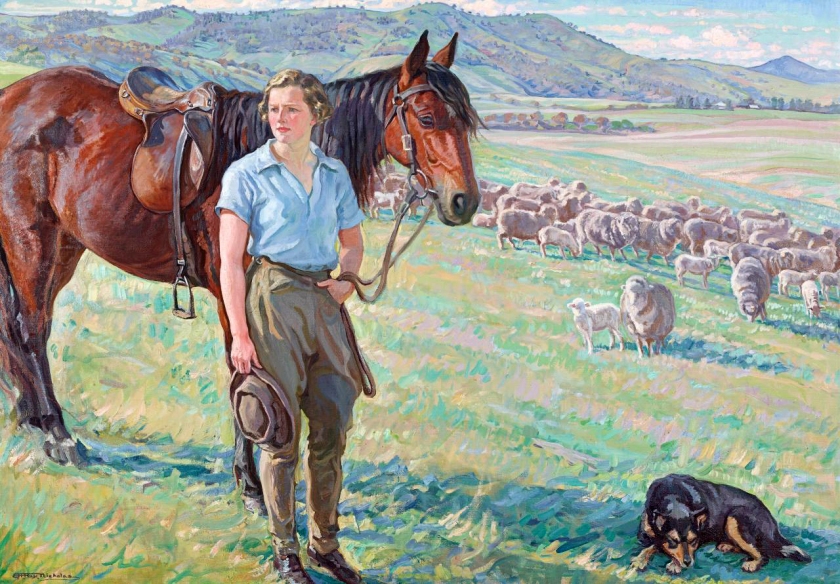














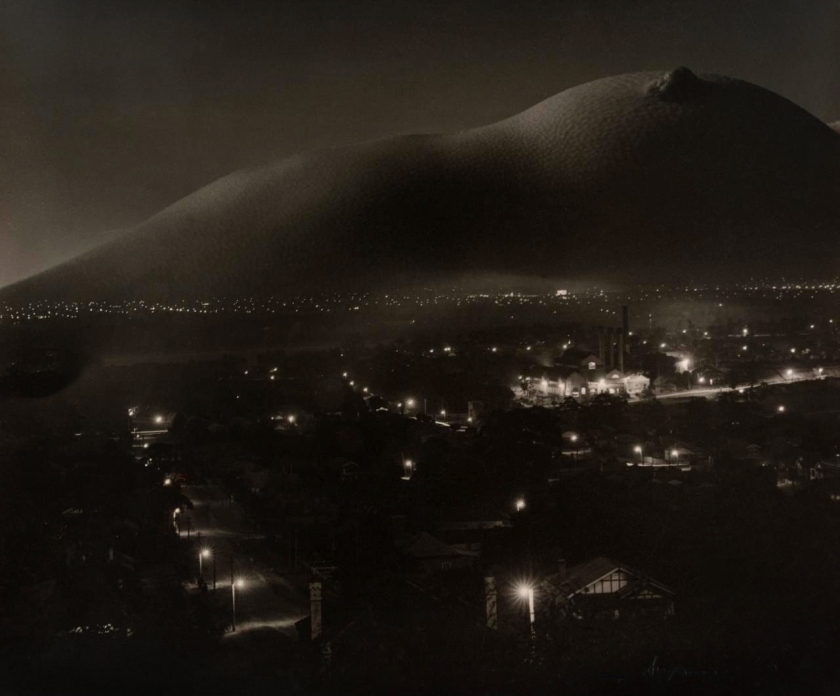





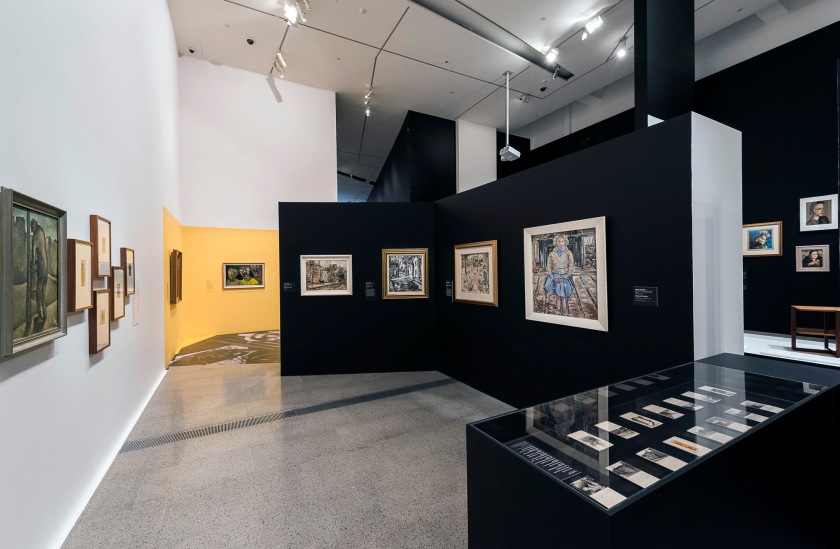









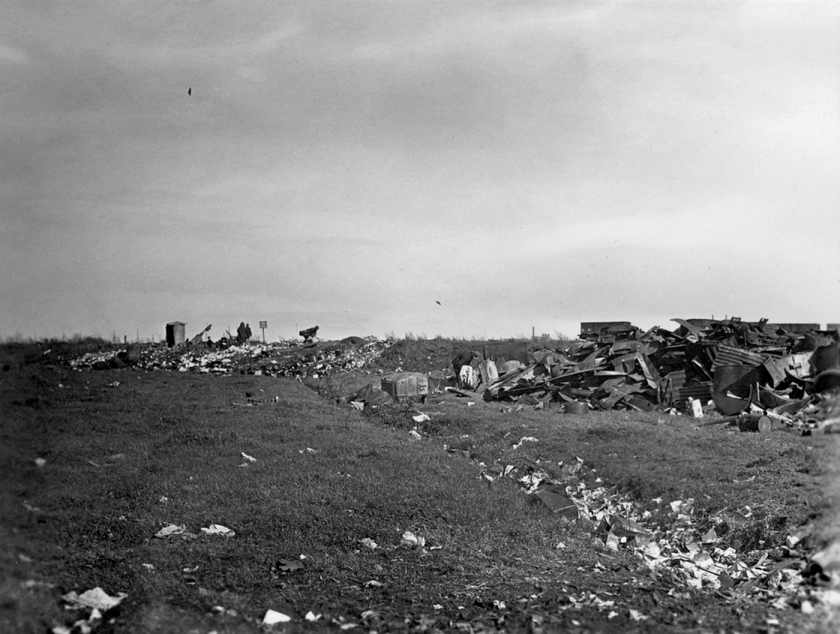

















You must be logged in to post a comment.